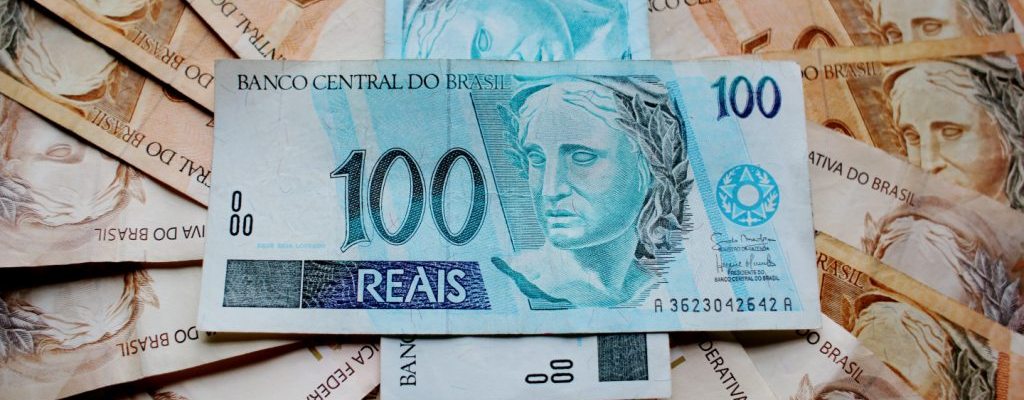From Barter to Debt: A Brief History
TRANSCEND MEMBERS, 21 Jan 2019
Dr. Naresh Jotwani – TRANSCEND Media Service
In which the brilliant deductive techniques of Sherlock Holmes are applied to the origins of debt, currency and the debt-linked economy.
- Background
Imagine the simple human economic life of about five thousand years ago, based on the production and exchange of the necessities of life. If one family has a surplus goat, say, and another family has surplus wheat, then both would benefit by making an exchange — so much wheat for a goat. Economically, the exchange would make excellent sense, because it would leave everyone better off.
Individuals, communities and families which relied on the barter economy had to be practical economists; their lives depended on shrewd economic judgement.
Not to say that life would not have other aspects, both pleasant and unpleasant. There would be music, sport, romance, oral traditions, art, craft … and also disputes, envy, betrayal. There is absolutely no reason to believe that people of those days were not intelligent, creative, shrewd and happy.
But sometimes the family with a surplus goat may not be in need of wheat, whereas the family with surplus wheat may badly need a goat — for a family reunion, say. It would not be long before the smart people of the day would come up with the idea of an IOU. After accepting the much-needed goat, the second family would give to the first an IOU for an agreed-upon amount of wheat.
About five thousand years ago, the IOU might have taken the form of a clay tablet with some suitable markings on it; precise details of the physical form of the IOU do not really matter.
With human ingenuity constantly at work, it would not be long before the expert goat-herd families of the day collected a huge amount of IOUs from other families. They would understand that the wheat IOUs gave them the right to ‘buy’ not only wheat, but also other commodities — provided only that the suppliers of the other commodities accepted wheat IOUs as ‘payment’. Depending on need, other forms of IOUs would also make their appearance — say, wool IOUs, fish IOUs, and so on.
These IOUs were a form of early money — serving both as medium of exchange and store of value. People accepted IOUs ‘in payment’ for supply of goods, because they knew the families concerned and therefore knew that ‘the wheat IOUs were as good as wheat’ … and similarly for other IOUs.
So the ‘money supply’ of the day consisted of IOUs backed up by useful, real commodities, and faith amongst the people that the issuers of the IOUs ‘stood behind the IOUs’. The issuers could be trusted to deliver the promised quantity of wheat, goat or another commodity.
The crucial concepts here are (a) useful, real commodities and (b) trust. Any sensible person of that day would expect these qualities from the prevailing economic system.
Another feature of community life would be that some individuals — based on their vigour or intelligence — would serve as organizers, dispute resolvers or arbitrators … ‘community leaders’, say.
- Progress
Around that time, a few major innovations occurred which have had huge impact on human life. It seems that these innovations occurred over a fairly short historic period.
Organized instruments of coercion
The first of these innovations involved the use of organized instruments of coercion — to impose a conveniently defined ‘order’ on society. What this meant was that the ‘headman’ or ‘headwoman’ of a community employed ‘guards’ to do his or her bidding, ostensibly towards ‘greater social good’.
There is no question that, from time to time, dispute resolution is required in social life — because disputes do occur when two or more persons contend over anything. But organized — specialized! — instruments of coercion are not needed for dispute resolution. It is possible for disputants to put sort things out in good faith, perhaps with the help of a trusted arbitrator.
On the other hand, ‘organized instruments of coercion’ develop selfish interests of their own. They may sense than festering disputes work out to their advantage; and they may cunningly persuade the ‘headperson’ that they are truly indispensable to achieving ‘social stability’ … and so on and on.
In addition to brutish ‘musclemen’, soon the ‘organized instruments of coercion’ began to include seemingly ‘learned people’ who could provide convenient justifications for almost anything that needed to be done in the interests of ‘social order and stability’. The required justifications were supplied in the name of ‘law’, ‘god’, ‘stability’, ‘security’, ‘progress’ … as may be expedient at a given time.
Tax
Debt and tax should be understood as being both (a) closely interrelated to each other, and (b) useful ancillaries to the organized instruments of coercion described above.
Once a ‘headperson’ is persuaded that he or she has ‘an indispensable and central role in maintaining social order’, the seductive idea of ‘tax’ takes complete hold of his or her mind. ‘Ordinary community members’ are coerced into contributing towards the cost of ‘maintaining social order’ — including, naturally, the cost of maintaining the expensive instruments of coercion.
A brilliant new ‘business model’ was thus born about five thousand years ago!
It is not an over-statement to say that this has been the most durable and successful business model in human history. With the imposition of ‘tax’, community members become beholden to the ‘headperson’. From childhood, every citizen is educated to uphold this ‘moral obligation’, while the beneficiaries of the system find ways to evade their own moral obligation.
The ‘headperson’ soon became ‘king’ or ‘queen’, and took on a certain ‘majesty’ for added effect. Cost of the ‘majesty’ is always borne by ordinary people; that is, they must pay for the privilege and the glamour of being governed by the ‘majestic ones’, with ‘divine sanction’ also thrown in.
Debt and common currency
Once the idea of ‘tax’ took hold in society, a deadly accounting trick became available to ‘rulers’. This trick had the potential to transform any formerly free citizen into a debt-slave.
Recall that IOUs were circulating in healthy societies even before the above-mentioned innovations were imposed on free citizens. Now suppose that a goatherd had been ‘persuaded’ to supply one goat a week to the ‘king’ or ‘queen’ as ‘tax’, which ‘every good citizen must pay’. Since the goat was given as tax, the goatherd received nothing in return from ‘royalty’ — neither a useful produce nor an IOU.
But the goatherd had to get along with daily life, and procure the necessities of life for the family. Without any IOUs as ‘payment’ for the goat, he or she would be in a ‘liquidity crunch’.
Economic naïveté or distress can always be exploited. The goatherd’s ‘liquidity crunch’ — induced by ‘tax’ — made him or her vulnerable to exploitation. The ‘king’ or ‘queen’ stepped in graciously and extended ‘debt’ to the distressed goatherd. Naturally, this was done through cunning agents, since ‘royal hands’ must not be seen to be sullied by such crass commercial deals.
The goatherd received ‘common currency IOUs’ from ‘royal’ agents as debt, with an obligation to repay. To ensure repayment, ‘organized instruments of coercion’ served as tax and debt collectors.
What the goatherd thus received was yet another innovation — a ‘common currency’, which by ‘royal fiat’ could be exchanged for any commodity.
Naturally, all earlier forms of trusted IOUs were forced out of the economy. The ‘royals’ now had total control over currency — which was now a fiat currency. Thus, in return for being clever and cunning, the ‘royals’, now operating a ‘central bank’, now had the citizenry working as debt-slaves.
An extra bonus accruing to the ‘royals’ was that the power to create fiat currency bestowed on them huge political power — to be used at the supreme and arbitrary decision of his or her ‘majesty’. More often, cunning people lurking behind the throne operated all the levers of power.
- History
Thus ‘money’ became much, much more than a medium of exchange and store of value. It became a sophisticated instrument of political and economic power. Ordinary goatherds, farmers … and other such simple people … would never understand what hit them; but they would be dazzled by ‘royalty’ nonetheless. All along, ‘religion’ provided the ‘soft power’ which went hand-in-glove with other instruments of coercion — a velvet glove on an iron hand, you might say.
The rest is merely a matter of detail. Kings and queens have come and gone — as on a stage. One was Joe and one was Jane; one was fat and one was slim; one was stabbed to death and one died of syphilis; one worshiped this god and one worshiped that one … and so on and on. Where a ‘monarch’ is not readily available, ‘majestic institutions’ have been developed towards the same ends.
Meanwhile, instruments of coercion have evolved into instruments of mass surveillance, deception, incarceration and even destruction; but the basic calculus of economic life has not changed. Human ingenuity is at work in exploiting everything in sight — without the slightest trace of compassion.
***
So what is to come next, dear Sherlock? Do tell.
I am afraid I cannot, dear Watson. I am only a detective, not an oracle.
_________________________________________________
 Dr. Naresh Jotwani is a semi-retired academic living in India and a member of the TRANSCEND Network for Peace Development Environment. Apart from part-time engagements in engineering education and consulting, he engages in an in-depth, personal exploration of how Gautam Buddha’s profound discoveries and teachings can be applied to the acute problems of modern life.
Dr. Naresh Jotwani is a semi-retired academic living in India and a member of the TRANSCEND Network for Peace Development Environment. Apart from part-time engagements in engineering education and consulting, he engages in an in-depth, personal exploration of how Gautam Buddha’s profound discoveries and teachings can be applied to the acute problems of modern life.
This article originally appeared on Transcend Media Service (TMS) on 21 Jan 2019.
Anticopyright: Editorials and articles originated on TMS may be freely reprinted, disseminated, translated and used as background material, provided an acknowledgement and link to the source, TMS: From Barter to Debt: A Brief History, is included. Thank you.
If you enjoyed this article, please donate to TMS to join the growing list of TMS Supporters.

This work is licensed under a CC BY-NC 4.0 License.
